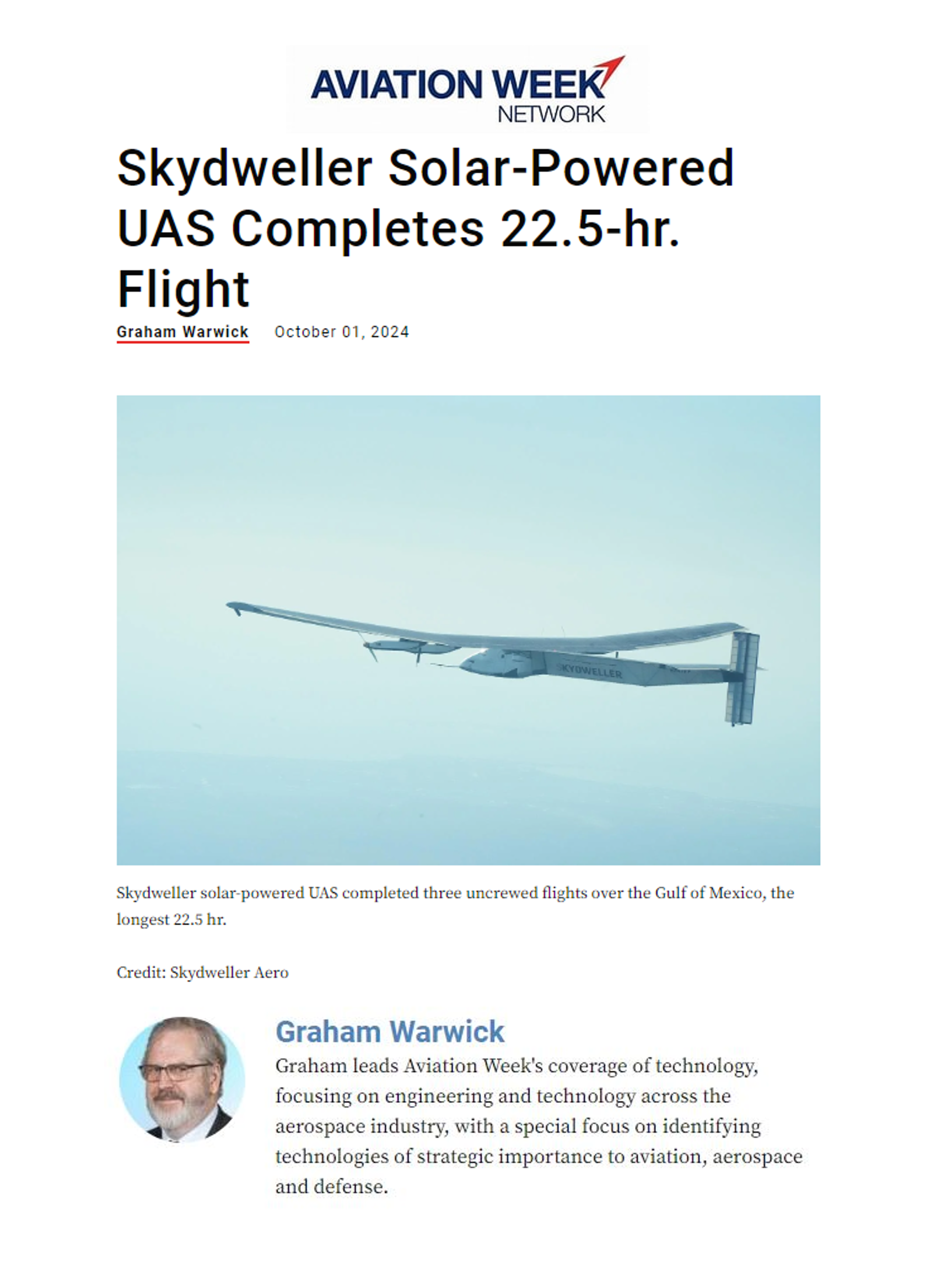
The complete article can be accessed here (subscription required): Skydweller Solar-Powered UAS Completes 22.5-hr. Flight | Aviation Week Network
Excerpted from Aviation Week:
…the Sept. 22 mission demonstrated the feasibility of staying airborne for weeks to months on solar power and batteries. “The data gathered validates our model for multiday flights,” co-founder and CEO Robert Miller says.
The flights also showed the aircraft’s ability to fly in operationally relevant weather. “We’re not flying in Yuma in July. We’re flying over the Gulf Coast in hurricane season,” he says, referring to previous record-setting solar-powered UAS flights conducted over Yuma Proving Ground in Arizona.
Autonomous flights with no pilot on board began with a 3-hr. 10-min. mission on. Sept 14. A 16-hr. 11-min. flight followed on Sept 19-20 and led up to the 22-hr. 22-min autonomous flight on Sept 21-22. The flight was cut short because of the risk of high winds from the approaching Hurricane Helene.
“We got plenty of data from the 16-hr. and 22.5-hr. flights that shows we can do perpetual flight,” Miller says. Another reason for truncating the final mission was the aircraft is flying on new, high-performance batteries, leading to concerns about performance at low voltage after powering the aircraft through the night. But the flight showed “we have more margin than we thought we had,” he says.
The longer flights also demonstrated the aircraft ’s redundancy and turnaround between missions. A circuit breaker failed early on the 16-hr. flight, but the system redundancy handled the failure correctly and the aircraft flew on for another 13 hr., Miller says. The breaker was replaced aft er landing and a day later the aircraft was launched again. “We put a new one in and it flew for 22.5 hours,” he says.
The flights also showed the aircraft ’s ability to operate in the vicinity of weather, as the 16-hr. flight was conducted with developing thunderstorms in the area. “This shows we can fly in an operationally relevant environment,” Miller says. This supports the Skydweller UAS’ use for long-duration missions from the U.S. over the Caribbean and West Africa where the Pentagon does not have forward bases.
Because of its size…the Skydweller UAS can carry heavier payloads than other solar-powered and most medium-altitude uncrewed aircraft. The aircraft is flying with two line-of-sight data links and three satellite communications systems—Iridium, Inmarsat and Skylight—with a fourth to be added. “That’s a lot of capacity,” he says.